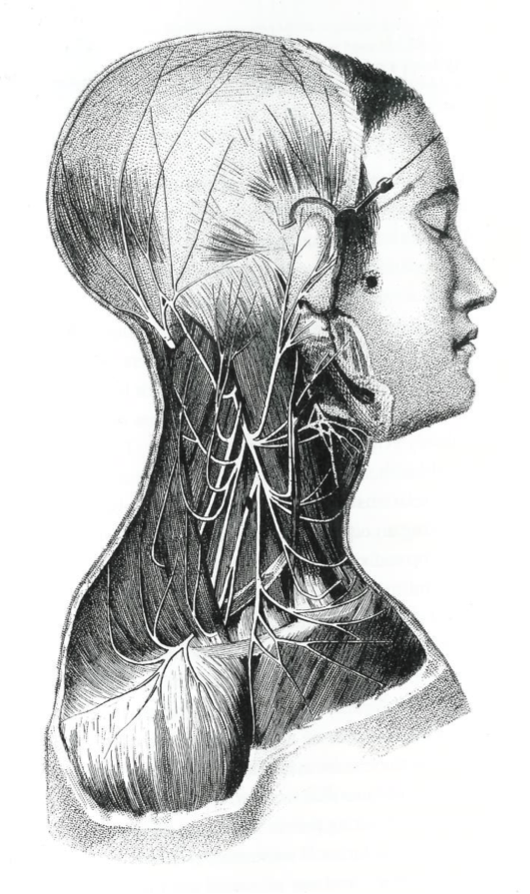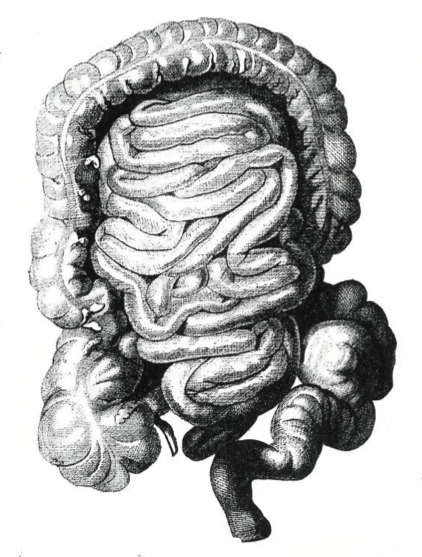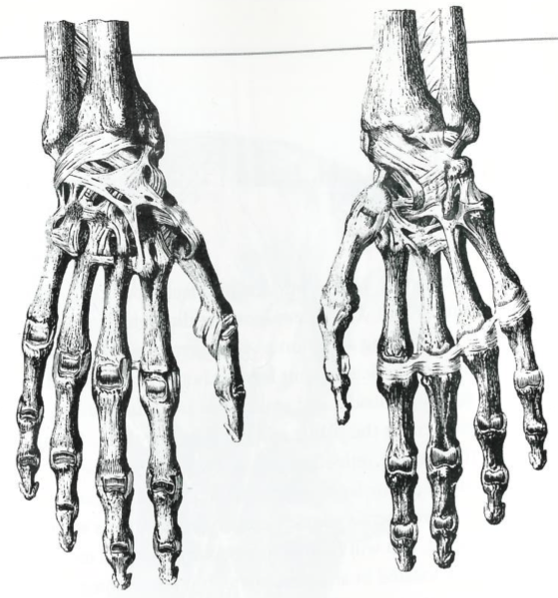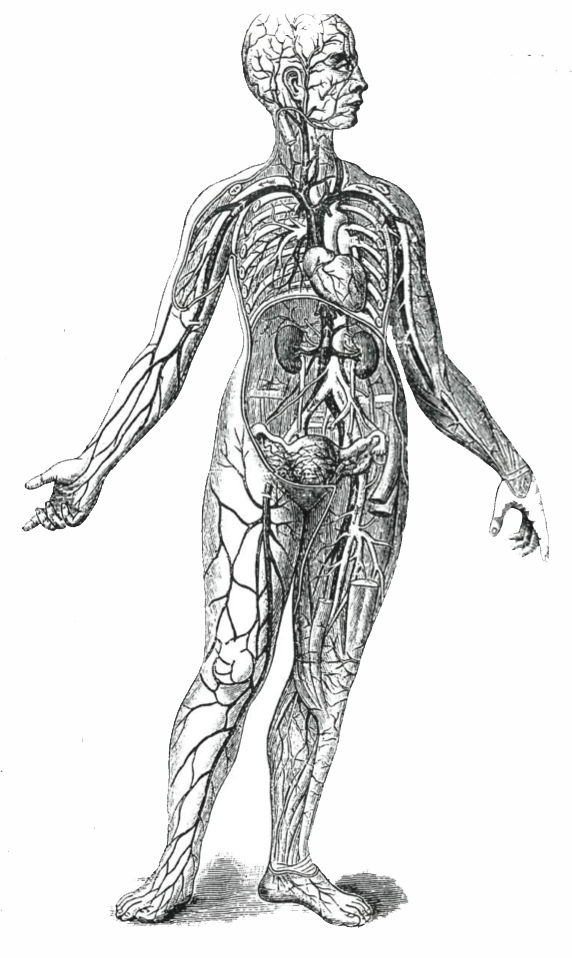In the Samyutta Nikaya, the Buddha says, “This body is not mine or anyone else’s. It has arisen due to past causes and conditions.” The Buddha intuited some type of evolutionary process that creates our bodies, and his essential point is that they are neither formed nor owned by us. We now have evidence that our bodies arise from the forces and elements that make up the entire universe, through a complex chain of interdependent events. Internalizing this understanding can help liberate us from the powerful sense of ownership and attachment we have to the body, which is a cause of tremendous suffering, especially as the body grows old and we must face its inevitable destiny.
The following guided reflections from the Buddha are adapted from the classic exercises on mindfulness of body found in the Mahasatipatthana Sutra. Here we combine the experiential aspect of bringing mindfulness to various parts of the body, with some simple reflection on the evolutionary origin of those body parts. These exercises can help to reveal that this body is not ours; it is evolution’s body. The body we live in is a loaner. The exercises are best done in a seated position (sitting in a chair is fine), keeping the spine as straight as possible. It is useful to read through the entire series of exercises, and then return to the beginning and focus on a single reflection at a time. After reading a reflection on one particular body part or function, close your eyes and bring your attention to that area of the body and begin the exercise. These reflections can be done in any order, or separately, and you may take as long as you wish for any of them.

THE BODY AND THE ELEMENTS
Begin by bringing attention to your entire body, and for a few moments just feel the body’s warmth and strength, its ability to hold itself upright. The vitality and aliveness that you experience in your body require various chemical and mineral substances, a continuous supply of oxygen, the energy of the sun, and the cohesion and conductivity of water. The Buddha instructs us to reflect on the body as composed of the elements of earth, air, fire, and water, so that we will see how this life is interwoven with universal processes.
Resting attention on your breath for a few moments, sense the fact that you are located in an atmosphere—the medium through which you move, and by which your body lives. Can you feel the air all around you as a substance? Move your arm and feel it parting the air, almost as if you were swimming through this medium.
Now bring attention to your breathing, and simultaneously look at a plant in your house or the plants growing outside, and realize that with each breath you are feeding the plants and being fed by them. Doing this simple reflection just a few times can begin to alter your feelings about the plant kingdom.
As you sense yourself exchanging nutrients with the plants, you will be able to recognize that you are not only located in an atmosphere, but are an integral part of it. With every breath you are participating in the great cycles of water and gases, the hydrosphere and atmosphere. With each breath you are joining in the single great breath of all earth life.
THE SKELETAL FRAME
Focus attention on the great bone of your skull. Let awareness roam over the entire area of your head, feeling this massive bone that houses the delicate brain. Notice the holes conveniently placed for the sense organs of hearing, smelling, tasting, and seeing, and the great opening at the bottom of the skull for the spine to enter. It has taken 500 million years of vertebrate evolution to get your skull into this shape, with its narrow, brooding forehead.
 To get a better sense of the skull bone, gently clench your jaw and grind your teeth together a little. As you feel the power of your jaw, you might reflect on the fact that the jaw began developing in an early, wormlike marine creature, which gained great survival advantage with the newfound ability to eat things that were bigger than itself. The vast number of chewers now alive in the world testifies to the usefulness of this powerful hinge.
To get a better sense of the skull bone, gently clench your jaw and grind your teeth together a little. As you feel the power of your jaw, you might reflect on the fact that the jaw began developing in an early, wormlike marine creature, which gained great survival advantage with the newfound ability to eat things that were bigger than itself. The vast number of chewers now alive in the world testifies to the usefulness of this powerful hinge.
Next, move awareness down from the skull into your spine and ribs. See if you can sense the entire skeleton of bones extending outward from that central ridgepole of spine. If you move your limbs or head around a little, you might get a kinesthetic sense of the skeletal structure. You could also visualize the skeletons you have seen, from Halloween, anatomy books, or Grateful Dead posters. As you visualize and feel the bone structure, be aware that there are over six hundred separate bones in your body.
While you are feeling the entire skeleton, you might also reflect for a moment on the fact that our bones are composed of calcium phosphate. They are, quite literally, the clay of earth, molded into our human shape. Our bodies are not only on the earth, they are of the earth. When seated or walking, you can feel your body as a kind of earth sprout that gained mobility.
While on the subject of bones, we can draw a good lesson in dharma practice from the early microbes, which apparently were irritated by calcium phosphate and other sea salts and would flush them from their bodies. Then some enterprising microbes, perhaps after “sitting through” the irritation (so to speak), discovered that the mineral substances could help protect their bodies. Thus the bones of the first skeleton began to take shape. It is interesting to note that in mineral content and porosity, human bones are nearly identical to certain species of South Pacific coral, and plastic surgeons have begun to use this coral to fix and replace human bone.
THE DIGESTIVE SYSTEM

Next, move your mindful awareness to your stomach area. Although you may not feel many distinct sensations, let your awareness linger there as you reflect on some of the activity taking place in this region of your body. For instance, at this moment, along with digestion taking place—nutrients being extracted from food substances and waste being processed for disposal—there are thousands of cells being born and dying. Your stomach contains hundreds of thousands of digestive glands, and the stomach must produce a new lining every three days to protect itself from its own digestive juices. For this task, your stomach is producing up to five hundred thousand new cells every minute.
Along with all of this activity, you might consider that at this very moment there are more living beings inside your stomach than all the humans who have ever lived on earth. Considering the billions of bacteria and microbes that live inside each of us, microbiologist Lynn Margulis writes, “Our concept of the individual is totally warped. All of us are walking communities.” We are not separate selves. Each of us is an ecosystem.
THE HANDS
Bring attention to your hands. Spread your fingers out, wiggle them, press them against your palm and thumb. The five-digit design of your hands goes back 370 million years to the first land vertebrates, called tetrapods. Maybe five digits were the minimum number needed to hold on to the land and not slip back into the sea. As you feel your hands, consider that just two million years ago, a blink in biological time, our ancestors could barely manipulate rocks and sticks, and now some of our hands can play the piano, type over a hundred words a minute, and build rockets and computers. You can experience the great dexterity of your hands right now, by simply unbuttoning a button. You don’t even consciously have to direct those movements! Our hands (and brains) definitely deserve a round of applause.

As you clap, you might also notice the flexibility of your wrists. Most people can move their wrists around in an arc of almost 360 degrees, and our shoulders are almost as flexible. According to the evolutionary biologists, this range of movement in our wrists and shoulders came about because for millions of years our ancestors got around by swinging through the trees. How many of our physical characteristics are inherited from the life that came before?
Recent research indicates that the dexterity of our hands was also very important in the growth of our brains. As our hands began to manipulate tools, a bigger brain was required to direct the movements and store the enormous new amounts of information being learned. The interaction and mutual stimulation of hand and brain created an evolutionary feedback loop in which both developed to an unprecedented degree. As you move your fingers around—buttoning, typing, playing an instrument—you might reflect on the complex acti-vity going on simultaneously in your brain to direct those movements.
As we feel our arms and hands, we can also reflect that these appendages were once fins, and not just in our distant ancestors. Each of us, in the womb, develops both fin and gill-like structures as we cycle through the genetic instructions of the many life forms that preceded us. Our body and brain are built out of the triumphs and defeats of all earth life, an amazingly complex stream of causes and conditions.

THE WHOLE BODY
Finally, bring awareness to your entire body, sensing the complete organism. Feel the energies within the body, the streams of sensation, the points of twitching or tension, the great pulses of breath and heartbeat.
Realize how much activity is taking place at this moment within you—and without you. Right now there are literally millions of brain cells firing signals to one another, a veritable storm of electrical activity taking place inside your head. Your brain stem is busy monitoring your body temperature and rate of heartbeat, while your limbic system remains on alert for possible survival threats and opportunities.
Meanwhile, oxygen is being inhaled and transported throughout your body and burned as fuel in the process of transforming the stored energy of the sun into your own living energy. In every second, millions of cells are dying and millions more are being created. Chemicals that do the work of the brain, stomach, liver, and kidneys are being manufactured and secreted. As we contemplate our body, we begin to realize that we don’t direct most of these processes. We don’t live, so much as life lives through us.
These are just a few reflections on the evolutionary sources of the body and behaviors: They are practices of both deep ecology and self-liberation. Using scientific information as a skillful means, we can experience what has been called our “ecological self,” or “species self.” Through such exercises we can begin to realize that our individual human life is first and foremost life: second, it is human; and only third is it individual. Getting to know ourselves as biological beings, interwoven with all of earth’s elements and other forms of life, can be a good source of both our liberation and compassion.
Thank you for subscribing to Tricycle! As a nonprofit, we depend on readers like you to keep Buddhist teachings and practices widely available.